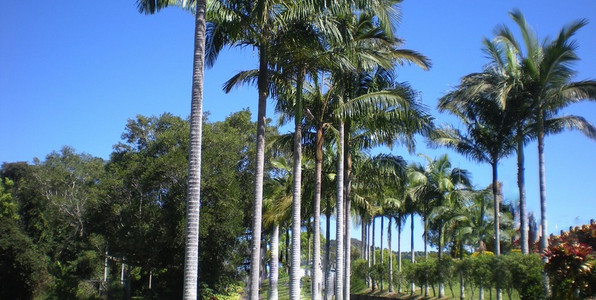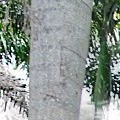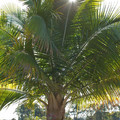Gallery
Click the thumbnails below to view image gallery:To add a relaxed tropical vibe to your backyard or living room, experiment with some "Low Maintenance Palms" Australia offers some beautiful hassle free choices for gardeners.
Feathery Foxtail Palms (Wodyetia bifurgata), Coconut Palms (Cocos nucifera), MacArthur Palms (Ptychosperma macarthurii) and for a unique addition, try Gebang Palms (Coypha utan)
They have prickly skins and can withstand most climate changes and will flourish.
Bangalow Palms
Bangalow Palms (Archontophoenix cunninghamiana) are a great low maintenance palm, as they can survive short stints in -2or-3 degrees c without wilting, anything colder could spell trouble. Maintain daily watering to properly hydrate the Bangalow.
Also invest in a slow release fertilizer. Expose Bangalow's to lots of sun to keep them healthy. Before long, the Bangalow could tower up to 25 metres. Bangalow Palms are typically healthy but sometimes mealy bug live in protected places under leaf sheaths.
Every summer, bright violet flowers bloom, which help spread seeds for new palms.
MacArthur Palms
For a palm that will flourish indoors, MacArthur Palm (Ptychosperma macarthurii) is preferable. More shade will slow down the palm's growth. Bring it outside with a healthy dose of sunshine to maximize growth. It grows 6 to 8 metres and prefers a humid environment.
Like Bangalow's, MacArthur Palms do best when watered every day. However, it will survive without a few days of water. To keep the MacArthur Palm healthy, pour fertilizer on once a month, it will keep the soil nutrient dense. White flowers blossom underneath the jagged leaves. Small, sweet red fruit adds to the flowers. There are no major pests or diseases to kill MacArthur Palms.
Foxtail Palms
Foxtail Palms (Wodyetia bifurcata) frame a backyard well. The leaves fan out, creating the tell-tale look of a fluffy foxtail. The Foxtail Palm is equipped with deep-growing roots to preserve itself in drought. It can even survive an early morning or late night frost.
Foxtails also self-prune, making upkeep easy. These palms flourish with lots of sunshine and potassium rich soil, growing up to 10 metres. Sweet red oranges bulge from underneath the leaves when the flowers bloom. Sandy and rocky soil is ideal. There are also no pests or diseases to worry about. Red fruit hangs from the Foxtails after six years.
Coconut Palms
Coconut Palms (Cocos nucifera) seem atypical in Australia. Surprisingly, it is also a great low maintenance Palm. This tropical adornment is natively found along the north QLD coast. Coconut Palms are outdoor plants and adjust well to most soils, and do especially well in sand or clay based environment. While waterlogged soil kills these palms, they need daily watering.
Gebang Palms
The Gebang Palm (Corypha utan) is a pricklier version of most palms. However, it still makes a great outdoor staple. Typically, Gebang Palms are found in hot, wet climates like grasslands and floodplains.
These tropical climates are best for these palms, which can eventually tower 12 metres and 9 metres wide. They thrive in sunlight and moist soil. Gebang Palms stay healthy when temperatures drop to just above freezing. Like the Coconut Palm, the Gebang Palm gives off pale yellow flowers. Green skinned fruit also hang low, with sweet flesh inside.
These palms offer an easy introduction to different palms. These plants encompass some low maintenance palms to brighten up any backyard. Some of them offer hardiness against cold, and most can deal with dry days. The delicious fruit, ranging from green to red berries, along with the occasional coconut add to the joy of having a palm. No matter your choice, they are sure to be low maintenance.
<< Previous Keeping Your Foxtails Disease Free | Back to Mullumbimby Palm Blog | Next >> Madagascar, an Island of Palms








